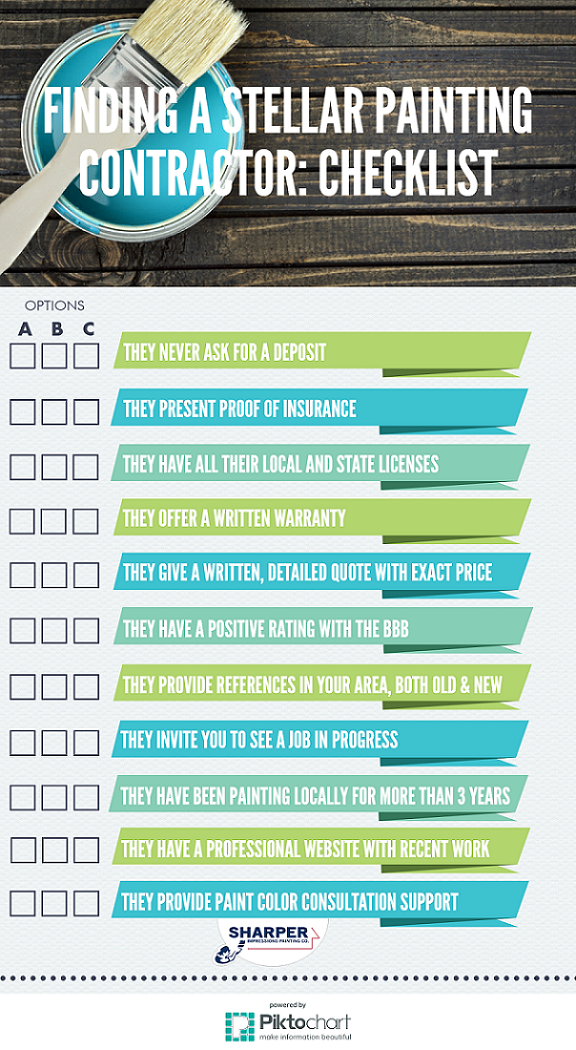Aspects To Consider For Industrial Outside Painting By Period: Necessary Info You Should Have
Aspects To Consider For Industrial Outside Painting By Period: Necessary Info You Should Have
Blog Article
Writer-Regan Whalen
When you're planning an industrial outside paint job, seasonal variables can make or damage your outcomes. You'll want to consider exactly how temperature level and humidity impact paint application and drying times. Selecting the appropriate period can guarantee your paint adheres effectively and lasts much longer. But which periods are really the very best for this type of job? Let's discover the key elements that can influence your project's success.
The Effect of Temperature on Paint Application
When you're planning a commercial exterior painting job, the temperature level can significantly affect exactly how well the paint adheres and dries out.
Ideally, you want to repaint when temperatures range in between 50 ° F and 85 ° F. If it's as well cool, the paint might not cure properly, resulting in concerns like peeling off or breaking.
On https://professional-exterior-hou10975.myparisblog.com/34884523/yearning-for-a-home-that-exudes-quality-and-vibrancy-discover-the-key-of-expert-house-painters-and-the-crucial-elements-that-make-a-home-absolutely-seem-like-a-home , if it's as well warm, the paint can dry too swiftly, preventing appropriate attachment and causing an unequal finish.
You should likewise think about the moment of day; morning or late afternoon offers cooler temperatures, which can be more desirable.
Constantly check the maker's referrals for the specific paint you're using, as they usually offer guidance on the excellent temperature range for optimum outcomes.
Moisture and Its Impact on Drying Times
Temperature level isn't the only ecological variable that affects your commercial external painting task; moisture plays a substantial function too. house painters minnesota can reduce drying out times dramatically, affecting the general high quality of your paint task.
When the air is filled with dampness, the paint takes longer to heal, which can result in concerns like inadequate attachment and a higher danger of mold growth. If you're repainting on an especially humid day, be planned for prolonged delay times between layers.
It's essential to keep track of regional weather and strategy as necessary. Ideally, go for moisture degrees in between 40% and 70% for ideal drying.
Maintaining these factors in mind guarantees your job remains on track and provides an enduring coating.
Best Seasons for Commercial Exterior Painting Projects
What's the best season for your industrial external paint jobs?
Spring and early loss are generally your best choices. Throughout these seasons, temperature levels are light, and humidity levels are typically reduced, developing perfect problems for paint application and drying out.
Stay clear of summer's intense heat, which can create paint to dry as well quickly, leading to bad attachment and coating. In a similar way, winter months's cold temperature levels can hinder appropriate drying and treating, risking the long life of your paint job.
Go for days with temperatures in between 50 ° F and 85 ° F for optimum results. Bear in mind to inspect the regional weather report for rain, as damp problems can spoil your job.
Planning around these variables ensures your paint project runs efficiently and lasts much longer.
Verdict
To conclude, intending your commercial exterior paint projects around seasonal considerations can make a considerable distinction in the end result. By organizing job throughout the perfect temperatures and humidity degrees, you'll ensure better adhesion and drying times. Keep in mind to watch on neighborhood weather report and select the correct time of year-- spring and early fall are your best bets. Taking straight construction will help you accomplish a resilient and specialist coating that lasts.
